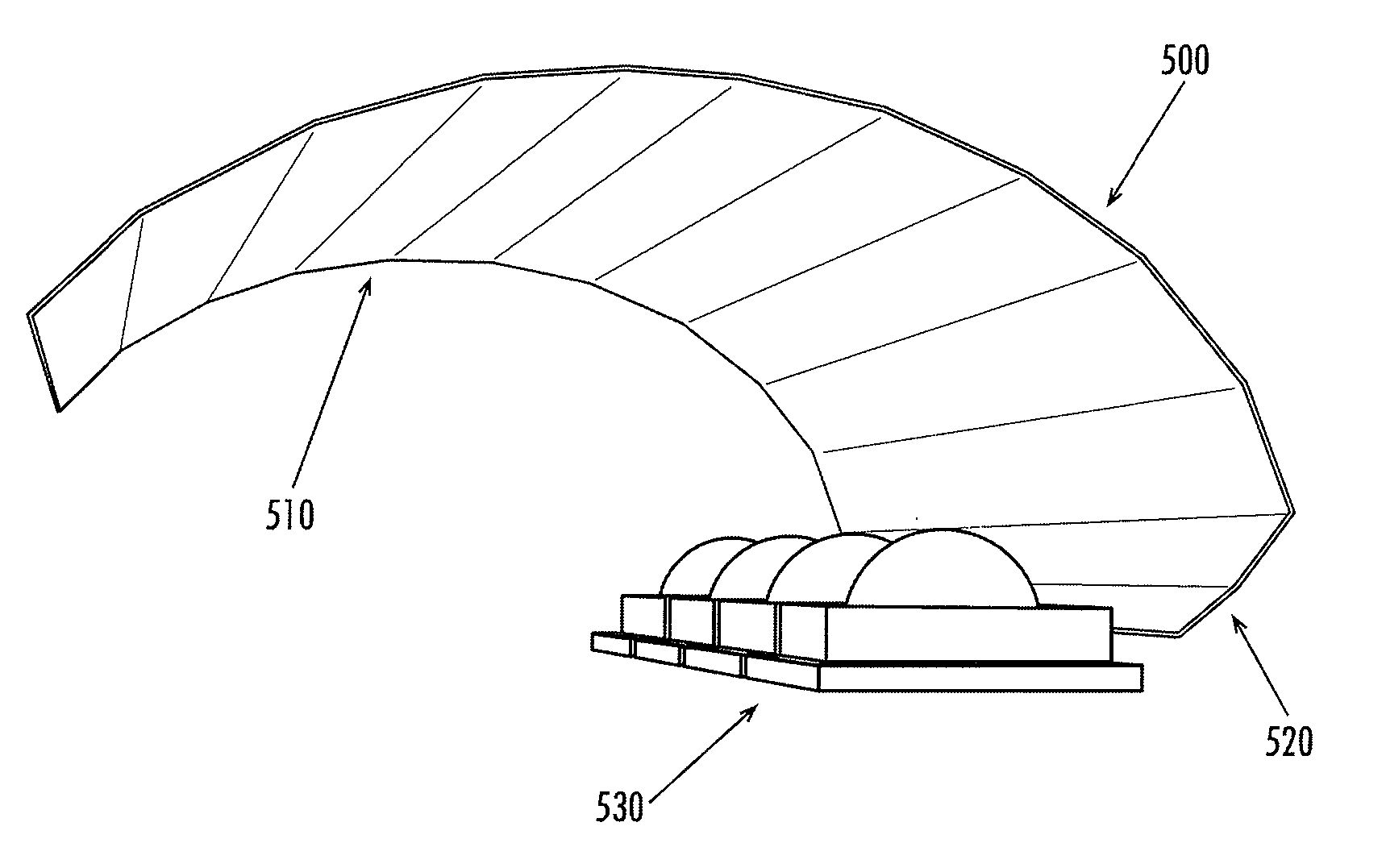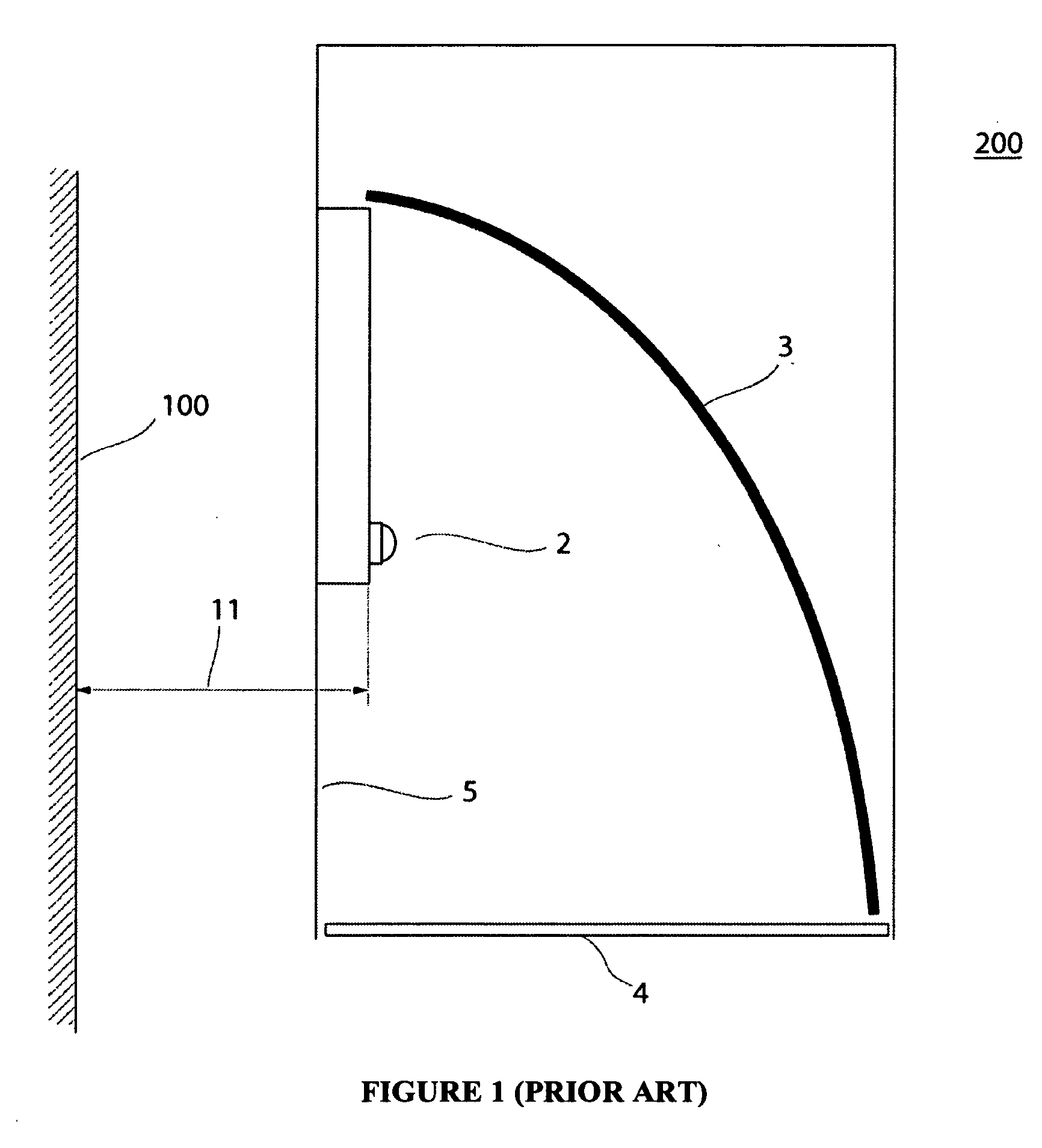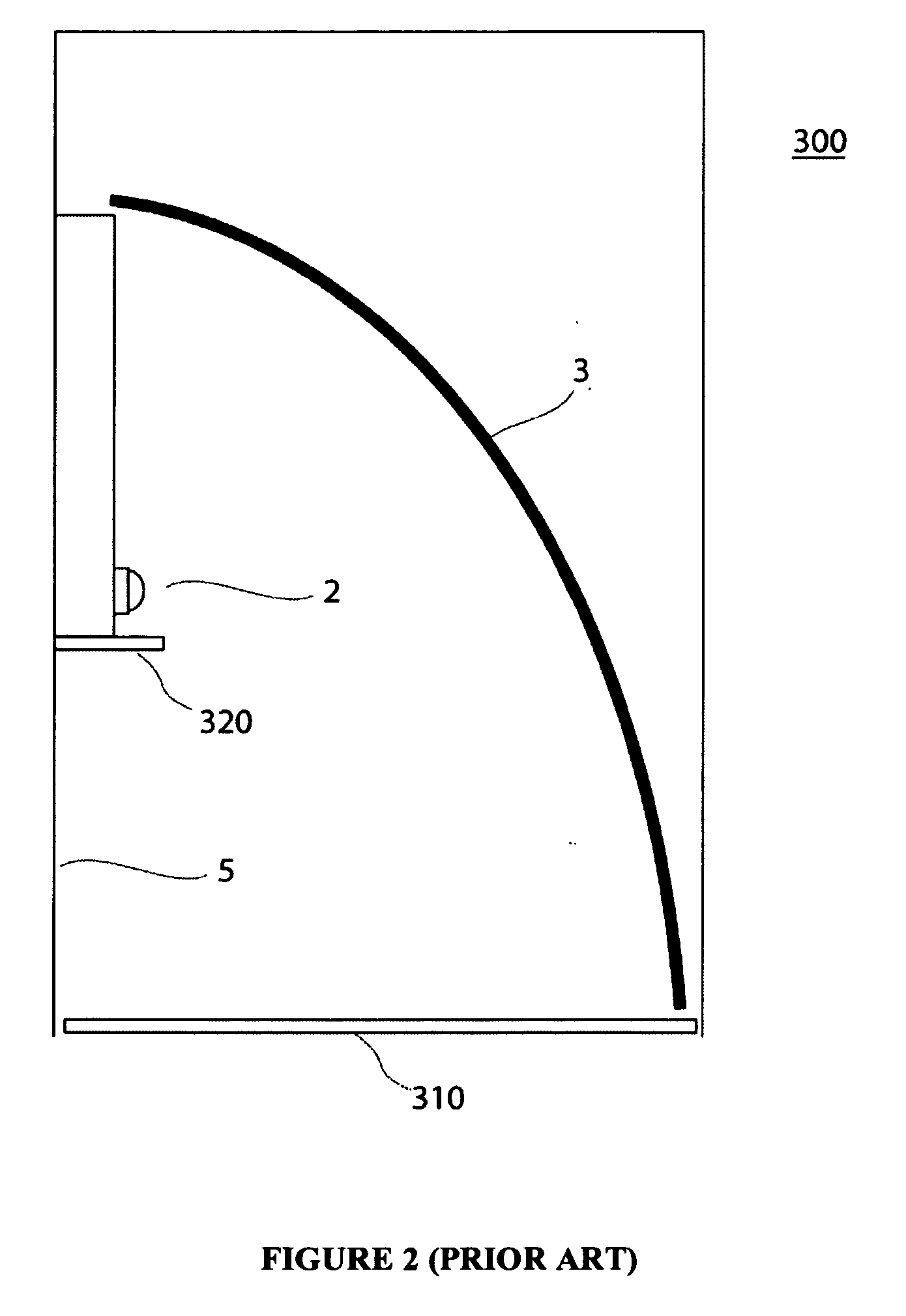Optical system for luminaire
a technology of optical system and luminaire, which is applied in the field of lighting, can solve the problems of unfavorable wall illumination, luminaire system, undesired hot spots or color spots,
- Summary
- Abstract
- Description
- Claims
- Application Information
AI Technical Summary
Problems solved by technology
Method used
Image
Examples
example 1
[0085]FIG. 11A illustrates a cross-sectional view of an example luminaire 7000 comprising example optical system 700. The optical system 700 comprises first reflector 710, diffuser 720 and second reflector 730. The luminaire 7000 further comprises LEE array 790. The LEE array 790 is aligned parallel to a plane that is oblique relative to a planar to-be-illuminated target surface (not illustrated), for example, a wall. FIG. 11B illustrates the illumination intensity profile of the target surface in horizontal 7002 and in vertical 7001 directions for the luminaire 7000.
example 2
[0086]FIG. 12A illustrates a cross-sectional view of an example luminaire 8000 comprising example optical system 800. The optical system 800 comprises first reflector 810, diffuser 820 and second reflector 830. The luminaire 8000 further comprises LEE array 890. The luminaire 8000 of FIG. 12A comprises an integrally formed first reflector 810 with two different segments 811 and 812. The two segments 811 and 812 are shaped in a parabolic way and each segment corresponds to sections of a different parabola. The two segments 811 and 812 join at a line along the extension of the first reflector that lies within a plane 899 (illustrated as dashed line in the cross section of FIG. 12A) perpendicular to the LEE array 890 and intersecting the LEE array about halfway between the top row and the bottom row of LEEs as illustrated by the dashed line. The LEE array 890 is aligned parallel to the target surface. Luminaires 8000 and 7000 comprise the same type and number of LEEs but are disposed i...
example 3
[0087]FIG. 13A illustrates a cross-sectional view of another example luminaire 9000 comprising example optical system 900. The optical system 900 comprises first reflector 910, diffuser 920 and second reflector 930. The luminaire 9000 further comprises LEE array 990 comprising three rows of LEEs. The first reflector of the illustrated embodiment is configured to provide two different parabolic segments 911 and 912. The two parabolic segments 911 and 912 join along a line that lies in a plane 999 (illustrated as dashed line in the cross section of FIG. 13A) perpendicular to the LEE array and intersecting the LEE array about halfway between the top row and bottom row of LEEs at about the position of the middle row of LEEs as illustrated by the dashed line. FIG. 13B illustrates the intensity profile in horizontal 9002 and in vertical 9001 directions for the luminaire 9000.
[0088]FIG. 14A, FIG. 15A and FIG. 16A illustrate cross-sectional views of further example luminaires including furt...
PUM
| Property | Measurement | Unit |
|---|---|---|
| length | aaaaa | aaaaa |
| isotropic bidirectional reflectance distribution | aaaaa | aaaaa |
| luminous flux | aaaaa | aaaaa |
Abstract
Description
Claims
Application Information
 Login to View More
Login to View More - R&D
- Intellectual Property
- Life Sciences
- Materials
- Tech Scout
- Unparalleled Data Quality
- Higher Quality Content
- 60% Fewer Hallucinations
Browse by: Latest US Patents, China's latest patents, Technical Efficacy Thesaurus, Application Domain, Technology Topic, Popular Technical Reports.
© 2025 PatSnap. All rights reserved.Legal|Privacy policy|Modern Slavery Act Transparency Statement|Sitemap|About US| Contact US: help@patsnap.com



